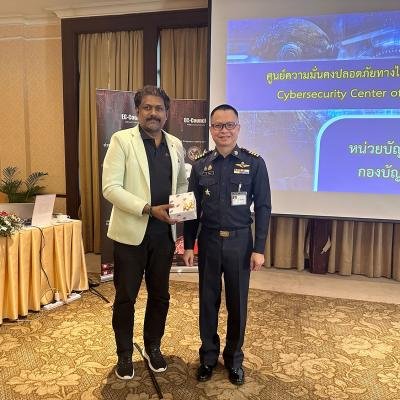In response to growing concerns about national and economic security related to critical infrastructure, the United States government issued Executive Order 13636 in February 2013. This directive tasked the National Institute of Standards and Technology (NIST) with the development of a voluntary framework aimed at reducing cyber risks associated with critical infrastructure. The resultant NIST Cybersecurity Framework, created through collaboration between industry and government, is a comprehensive set of standards, guidelines, and practices designed to enhance the protection of critical infrastructure.
Background:
Executive Order 13636 laid the foundation for the NIST Cybersecurity Framework, emphasizing the need for a collaborative approach to address cyber risks. The subsequent Cybersecurity Enhancement Act of 2014 reinforced NIST's role in developing this framework. The voluntary nature of the framework allows organizations of all sizes and sectors to tailor their cybersecurity risk management practices. Its creation was driven by the recognition that the national and economic security of the United States depends on the reliable functioning of critical infrastructure.
Framework Components:
The NIST Cybersecurity Framework comprises three main components: the Framework Core, Implementation Tiers, and Profiles.
- Framework Core: The Framework Core serves as the heart of the cybersecurity framework, providing a set of desired cybersecurity activities and outcomes. It employs common language that is easy to understand, guiding organizations in managing and reducing cybersecurity risks. Importantly, the Core is designed to complement an organization's existing cybersecurity and risk management processes, ensuring a seamless integration of the framework into established practices.
- Implementation Tiers: Implementation Tiers offer contextual guidance on how an organization views cybersecurity risk management. These Tiers assist organizations in determining the appropriate level of rigor for their cybersecurity programs. Additionally, they serve as valuable communication tools, facilitating discussions on risk appetite, mission priority, and budget considerations.
- Profiles: Framework Profiles represent an organization's unique alignment of organizational requirements and objectives, risk appetite, and resources against the desired outcomes of the Framework Core. Organizations use Profiles to identify and prioritize opportunities for improving cybersecurity within their specific context.
Functions of the Framework:
The Framework is organized into five key Functions, providing a comprehensive view of the cybersecurity risk management lifecycle:
- Identify: The Identify function focuses on understanding critical enterprise processes and assets. Organizations are encouraged to document information flows, maintain hardware and software inventories, and establish policies for cybersecurity, including roles and responsibilities. Identifying threats, vulnerabilities, and risks to assets is crucial, and risk management processes should be established and managed effectively.
- Protect: The Protect function emphasizes managing access to assets and information. This involves creating unique accounts, authenticating users, and tightly managing physical access to devices. Protecting sensitive data through encryption, conducting regular backups, and securing devices are also key components. Organizations are advised to manage vulnerabilities in devices through regular updates and configurations.
- Detect: The Detect function involves implementing capabilities to identify security events promptly. Continuous monitoring, anomaly detection, and incident detection and response mechanisms are crucial components of this function.
- Respond: The Respond function requires organizations to develop and implement response plans for detected incidents. This includes mitigating the impact of incidents, communicating effectively, and continuously improving response effectiveness.
- Recover: The Recover function focuses on developing and implementing recovery plans to restore capabilities impacted by cybersecurity incidents. Organizations are encouraged to improve resilience and learn from incidents to enhance future responses.
How to Get Started with the Framework:
Implementing the NIST Cybersecurity Framework involves a step-by-step approach to enhance an organization's cybersecurity posture. Here's a guide to getting started:
- Identify Critical Processes and Assets: Begin by determining the activities crucial for the viability of the organization. This involves identifying critical enterprise processes and assets that must continue to ensure viability. Examples include maintaining a website for payment processing, securing customer/patient information, and ensuring the accuracy and accessibility of collected information.
- Establish Policies: Develop and establish policies for cybersecurity that include clear roles and responsibilities. These policies should articulate expectations for how cybersecurity activities will protect information and systems. Integration with other enterprise risk considerations, such as financial and reputational risks, is essential.
- Risk Management: Implement robust risk management processes to identify, assess, and document internal and external threats. Establish risk registers and ensure that risk responses are identified, prioritized, executed, and monitored. This involves a proactive approach to managing risks and ensuring a comprehensive understanding of the threat landscape.
- Access Management: Create unique accounts for each employee, authenticate users before granting access, and tightly manage and track physical access to devices. Effective access management is critical in preventing unauthorized access and safeguarding sensitive information.
- Data Protection: If the organization stores or transmits sensitive data, implement encryption to protect this data. Regularly conduct backups, utilizing built-in capabilities or third-party solutions. Consider keeping one set of frequently backed-up data offline to protect against ransomware attacks.
- Training: Regularly train and retrain all users to ensure awareness of cybersecurity policies, procedures, and their specific roles and responsibilities. Cybersecurity training should be considered a condition of employment, fostering a culture of security within the organization.
Resources and Support:
Organizations can access various resources to support the implementation of the NIST Cybersecurity Framework:
- Framework Components: Access the Framework Core, Implementation Tiers, and Profiles online to gain a deeper understanding of the framework's structure and components.
- Informative References: Explore publicly available resources, including methodologies, implementation guides, case studies, and other relevant materials. These resources provide practical insights into how organizations have successfully implemented the framework.
- Success Stories: Learn from success stories that highlight diverse organizations' experiences in improving cybersecurity using the NIST Cybersecurity Framework. These stories offer valuable lessons and inspiration for organizations at various stages of implementation.
Feedback and Contact:
NIST encourages organizations and individuals to provide informal feedback about the Framework and its implementation. Contributions such as observations, suggestions, examples of use, and lessons learned can be sent to This email address is being protected from spambots. You need JavaScript enabled to view it.. This collaborative feedback loop helps enhance the Framework's effectiveness and usability over time.
Conclusion:
In the dynamic landscape of digital security, where threats are ever-evolving, implementing a robust cybersecurity framework is paramount. This comprehensive guide delves into the National Institute of Standards and Technology (NIST) Cybersecurity Framework, offering a roadmap for organizations, including digiALERT, to fortify their defenses and effectively manage risks.
As digital technologies become more integrated into daily operations, the guide emphasizes the importance of understanding critical processes, securing assets, and fostering a culture of cybersecurity awareness. The Framework's flexibility enables organizations to tailor their approach, making it particularly relevant for digiALERT, where digital solutions play a pivotal role in providing alert services.
The guide outlines the Framework's core components—Identify, Protect, Detect, Respond, and Recover—providing a holistic view of the cybersecurity lifecycle. By identifying critical processes, establishing policies, and managing access, organizations like digiALERT can create a robust foundation for cybersecurity. The guide underscores the significance of risk management, urging organizations to proactively identify and respond to threats while considering their unique risk appetite.
In the digital realm, data protection is paramount. The guide directs organizations to encrypt sensitive data, conduct regular backups, and implement measures to safeguard against ransomware—an especially relevant concern for digiALERT, where data integrity is crucial for reliable alert services.
Furthermore, the guide emphasizes the role of users in cybersecurity. Regular training and awareness programs ensure that employees at digiALERT are well-versed in cybersecurity policies and procedures, creating a human firewall against potential threats.
The Resources and Support section encourages organizations, including digiALERT, to explore additional materials and success stories. These resources serve as a repository of valuable insights, showcasing how diverse organizations have successfully implemented the Framework to enhance their cybersecurity posture.
As the digital landscape continues to evolve, the guide highlights the importance of continuous improvement. Organizations are encouraged to provide feedback to NIST, contributing to the ongoing refinement of the Framework. For digiALERT, this collaborative feedback loop ensures that the cybersecurity practices align with industry best practices and emerging threats.
In conclusion, the guide underscores that effective cybersecurity is not a one-size-fits-all endeavor. The NIST Cybersecurity Framework offers a flexible, adaptive approach, empowering organizations like digiALERT to navigate the complex terrain of digital security. By implementing the Framework's principles, digiALERT can not only strengthen its defenses against cyber threats but also foster a resilient and proactive cybersecurity culture, ensuring the reliability and security of its alert services in an ever-changing digital landscape.







